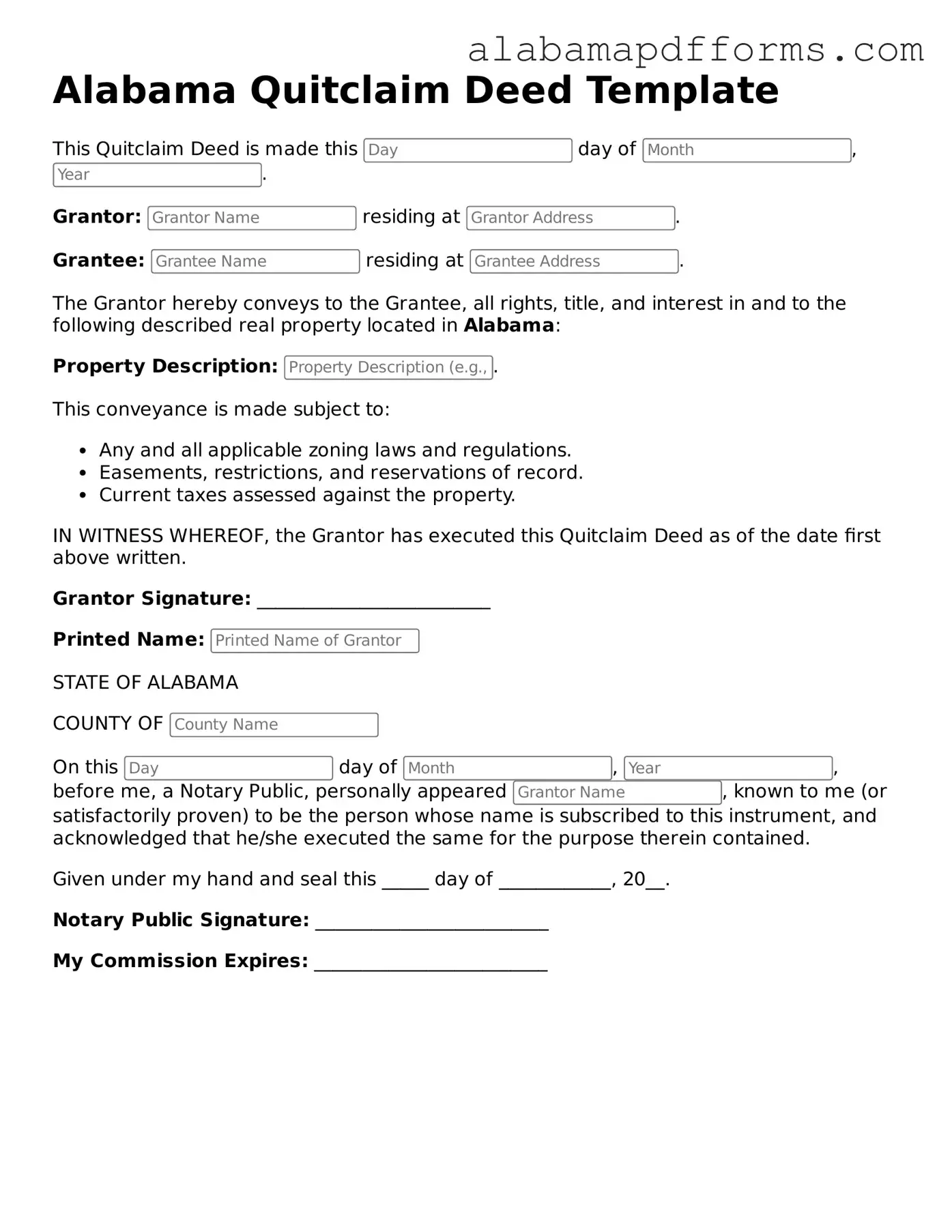A warranty deed is a document that transfers property ownership with a guarantee of clear title. Unlike a quitclaim deed, which provides no warranties, a warranty deed assures the buyer that the seller has the right to sell the property and that there are no undisclosed encumbrances. This document is often used in traditional real estate transactions where buyers seek protection against potential claims on the property.
For individuals seeking a reliable method to document ownership transfers, exploring a detailed Alabama bill of sale form can be invaluable. This formal document not only facilitates the exchange of items but also serves as an essential proof of transaction. For guidance on creating your own form, refer to the Alabama bill of sale form requirements provided on our site.
A special warranty deed is similar to a warranty deed but with a key difference. It guarantees that the seller has not caused any issues with the title during their ownership but does not cover any problems that may have existed before the seller acquired the property. This type of deed is often used in commercial transactions where the seller wants to limit their liability for title issues.
A bargain and sale deed conveys property without any warranties, similar to a quitclaim deed. However, it implies that the seller has some interest in the property. This type of deed is often used in foreclosure sales or tax sales, where the seller may not have complete knowledge of the title history.
A grant deed is a document that transfers property and includes certain guarantees. It assures the buyer that the seller has not sold the property to anyone else and that the property is free from encumbrances, except those disclosed. This deed provides more protection than a quitclaim deed, making it a common choice for real estate transactions.
An executor's deed is used to transfer property from a deceased person's estate to heirs or beneficiaries. It is similar to a quitclaim deed in that it does not provide warranties, but it is specifically tied to the probate process. This type of deed is important for settling estates and ensuring that property is passed on according to the deceased's wishes.
A trustee's deed is executed by a trustee to transfer property held in a trust. Like a quitclaim deed, it does not provide warranties regarding the title. This document is often used when a property is sold or transferred as part of a trust arrangement, ensuring that the terms of the trust are upheld.
A mineral deed conveys rights to minerals or resources beneath the surface of the land. Similar to a quitclaim deed, it may not guarantee clear title. This type of deed is used in transactions involving oil, gas, or mineral rights, allowing the seller to transfer ownership of these rights without affecting the surface property.
An assignment of interest is a document that transfers a party's rights or interests in a property or contract. While a quitclaim deed transfers ownership of real property, an assignment of interest may apply to leases or other agreements. This document allows for the transfer of rights without the need for a full property deed.
A leasehold deed conveys the rights of a leaseholder for a specified term. This document is similar to a quitclaim deed in that it transfers rights but does not convey ownership of the property itself. Leasehold deeds are often used in rental agreements where the tenant has certain rights to the property for a set period.
